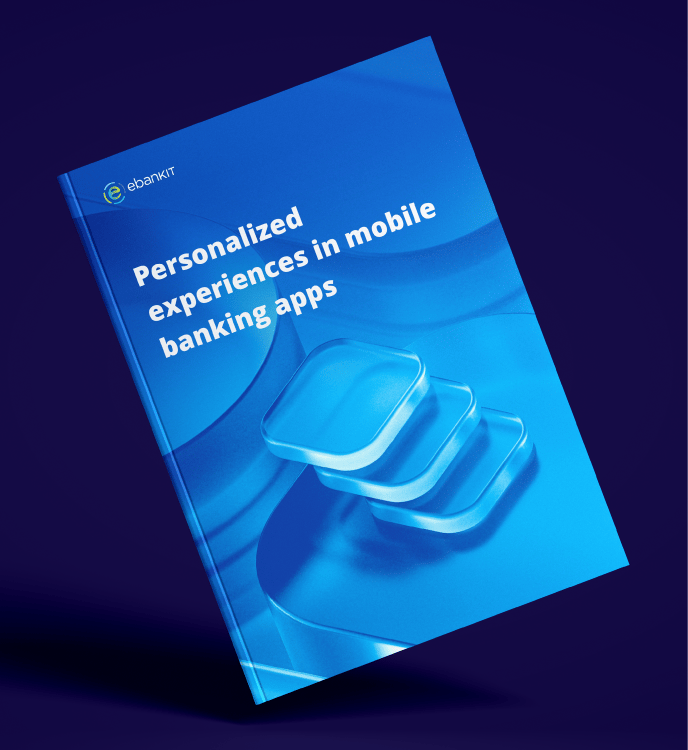The traditional Swiss banking sector faces the universal challenge of increased digitization and a tough local operating environment
Digitization is a challenge that is facing traditional banks worldwide. Over the last decade, the pace of change has been swift with the rapid rise of mobile-first services. The pandemic has accelerated the speed of change further still, with even laggard customers pushed to adopt digital services. Traditional players are well aware of the need for digital transformation, but delivering it is another matter. Digital transformation projects can be complex, costly, and time-consuming, and many players, particularly outside Tier 1 institutions, lack development and investment resources.
Switzerland’s world-renowned banking sector is not immune to the challenges of digitization. The country may be home to global brand names such as Credit Suisse and UBS, but it also has a large number of smaller banking institutions, including 226 regional and savings banks that provide localized services. Many of these institutions have a heritage dating back to the 1800s or, in some instances, even earlier.
For these smaller organizations, undertaking large, complex digital transformation projects is not a viable option. Their need is for a strong standard digital banking platform that can be implemented quickly and easily, allowing for a quick go-to-market strategy. Equally, platforms need to be flexible enough to allow for some level of differentiation and to allow banks to customize their offerings to the needs of their particular customers. After all, many of these local banking players pride themselves on understanding better the precise needs of their community.
The ability of a new platform to keep the total cost of ownership low is also a key consideration. While this would, of course, appeal to most banking institutions, the need in Switzerland is particularly pressing because of the negative interest rate environment. The Swiss National Bank introduced negative interest rates in 2015 to prevent the over-appreciation of the Swiss Franc, and there is no imminent prospect of interest rates being raised above zero. Consequently, the margins of Swiss banks have been shrinking, and there is an essential need to find efficiencies with an eye to profitability.
To meet customer needs and expectations, HBL wanted to expand and improve its digital offering
Founded in 1868, HBL is a regional bank headquartered in Lenzburg in the Swiss Canton of Aargau. It offers a range of traditional retail banking products and services for individuals and small and medium-sized enterprises (SMEs) and also has an asset management arm, HBL Asset Management. Often referred to as the “Hypi,” the bank operates 13 branches around the region. It has 60,000 customers, of which around 20,000 use digital banking.
Perhaps more unusual for a regional bank, HBL has an established banking transactional core software and service provider business. Its experience in this field dates back to 1975 when it started developing integrated IT solutions for other banks through its IT division. Its Finstar core banking product was originally developed for HBL in 2003 but, in more recent years, has also been sold as a commercial proposition to other Swiss banks, a development that was made possible with the launch of the Finstar Open API in 2017, which through ebankIT’s integration layer, seamlessly integrates Finstar APIs. Today, HBL has 11 Finstar customers across the Swiss market, and the unit is considered an essential means of diversifying the bank’s revenue.
HBL’s challenges related to its digital banking offering. While it had a strong core banking infrastructure in place thanks to Finstar, its digital offering was limited to Internet banking. It did not offer mobile banking, which is considered a must for today’s mobile-first generation, and this lack would put it at risk of losing future generations of customers to more modern providers. Its limited digital front end also meant it took a long time to design and add new services, meaning HBL could not be as responsive as it wanted to be in meeting customer needs.
A program of digital transformation with the aim of achieving a culture of continuous innovation across the bank
HBL took the approach of revaluating its entire digital strategy and implementing digital transformation across the bank with the aim of creating a culture of continuous innovation. In particular, the bank wanted to offer its customers a modern digital banking platform that could provide internet and mobile banking and would successfully integrate with the Finstar core banking platform, which would also allow it to readily develop and add new services or features.
Recognizing that its Finstar banking partners often faced similar challenges with regard to digital transformation, HBL also wanted to make the new digital banking platform available as a package with its core banking offering. In effect, HBL wanted to find a partner that would be willing to create a joint go-to-market offering for the Swiss banking market, comprising a transactional core, business layer, and fronting channels. The ebankIT omnichannel platform offered the last two of these.
HBL sought a digital banking provider that would be willing to take a partnership approach
In 2016, HBL started a competitive tender process to select a digital banking provider. Its key consideration was to find a partner that could provide a strong standard digital offering and solid innovation roadmap, and that would also be accommodating to the needs of smaller banks. Crucially, HBL sought a quick go-to-market approach, and how quickly a solution could be deployed was a significant part of its evaluations. Finally, HBL also wanted a vendor that would be prepared to take a partnership approach, a requirement that was particularly important given the brief to serve both HBL and HBL’s Finstar users.
After a thorough nine-month selection process, HBL chose ebankIT, which had impressed with the strong out-of-the-box capabilities of its omnichannel digital banking platform, which provided ease of deployment. As part of the evaluation, ebankIT had successfully undertaken a proof of concept, in which it had to demonstrate that it could integrate successfully with Finstar core banking. This was the first integration with Finstar core, and for that reason, ebankIT allocated one of its professional services teams to perform the integration, configuration, and customization services (usually such services are handled by ebankIT certified integration partners, with ebankIT’s internal teams guaranteeing quality assurance services). This degree of flexibility and commitment has been fundamental to building the relationship between HBL and ebankIT and it is maturing into a trusted partnership.
HBL’s new digital banking offer was launched in 2017
During implementation, the first step was for ebankIT’s omnichannel banking platform to connect to the Finstar core banking platform. Once this was achieved, there were certain custom requirements to fulfill. Notably, HBL had requested a redesign of the channels for its specific needs and those of its partners. Using ebankIT’s low-code development tool, ebankIT Studio, the new channel design was developed in three months, including the deployment of the Internet banking channel. After this first deployment, HBL continued with the rollout to all of its clients and deployed the mobile apps (iOS and Android).
Following the successful deployment with HBL, the ebankIT platform was also rolled out to other Finstar partner banks, with the first partner implementation completed in less than two months. All Finstar partners receive a tailored website design for Internet banking based on a single codebase and customized mobile banking apps. Each installation remains separate in terms of data collection and configuration in order to provide greater security and configurability.
The platform offers customers a modern digital frontend connected to ebankIT’s business layer, an end-to-end solution to underpin the expansion of Finstar
The implementation of the new digital banking platform was a success. HBL achieved its aims of providing its customers with a new modern frontend offering internet and mobile banking, and it reports an increase in customer satisfaction levels. Thanks to the connection of all channels to ebankIT’s business layer, HBL can have a 360° vision of each end-user. The business layer plays a key role because it interconnects channels with management and productivity tools (allowing monitoring, logging, and auditing of all data).
In line with HBL’s vision of continuous innovation, the new platform has also improved its ability to quickly add new requirements, with updates to the platform deployed every four weeks. The bank has also added new services to the offering, such as the new QR-bill, a Switzerland-wide initiative launched in June 2020 that will see traditional payment slips replaced by QR codes. It has also added a messenger service, Hypi Messenger, using messaging specialist Ubitec’s software, on the platform so that customers can communicate readily with a dedicated messenger customer services team when using online or mobile banking. The dedicated service team can handle queries directly or forward them as appropriate to the relevant bank department. The flexibility of ebankIT’s platform to deliver a region layer is part of the value proposition and a reflection of the platform’s flexibility. It has also been built for the specificities of the Canadian market and Islamic banking principles.
The project with ebankIT has also helped HBL achieve its aim of winning more Finstar customers, thanks to the readiness of ebankIT’s platform to use any language with light adaptations (currently, the platform is used in English, French, Portuguese, German, and Arabic). It was particularly important for HBL to build its presence in French-speaking Switzerland, and it now counts three clients there: Caisse d’Epargne de Nyon, Caisse d’Epargne d’Aubonne, and finally, Caisse d’Epargne Riviera, which will go live in 2021.
Take the long-term view on your digital strategy: Is it truly fit for purpose?
At the start of its digital transformation journey, HBL already had Internet banking services in place, and only a third of its customer base used digital services. It could conceivably have got by with its existing offering for a few years more. However, it was not sustainable in the long term: the shift to digital services is clear, and mobile banking is a necessity for attracting new generations of customers. In addition, the old infrastructure meant that HBL could not be as responsive as it wanted to be in adding new products and services. Undertaking a full-scale digital transformation project is unlikely to be pain-free, although the selection of ebankIT’s platform was a major factor in accelerating the process, and the end result will almost certainly outweigh any difficulties in getting there. HBL’s commitment to digital transformation meant it was in a good position to meet the challenges of COVID-19 head-on, and it is well-placed to respond to future market and customer needs.
Consider working with a vendor for digital services; it will be better placed to keep up with technological change
One of the main challenges of digital transformation is keeping pace with the speed of change. Digital trends and technology are evolving at an ever-increasing rate. This is particularly problematic for smaller organizations that do not necessarily have the resource or capacity to keep on top of these developments. Working with a third-party vendor specializing in digital—as long as it is the right one for your organization—will overcome this issue. HBL has a strong IT services offering and development capability, as demonstrated by its Finstar offering. It had also previously developed its own Internet banking services, but it still chose to work with a partner for this digital transformation project.
Select your partners with care; finding the right fit is imperative
Working with a third-party vendor will naturally be more successful if there is a good fit for needs. HBL was very clear that it wanted to work with a third party that was flexible and willing to take a partnership approach. Indeed, this was considered essential given the need to supply Finstar partner banks. One of the main reasons, beyond its strong out-of-the-box offering, why ebankIT was selected was because of the openness and flexibility it displayed. These qualities were demonstrated in the proof of concept that ebankIT undertook as part of the evaluation process. This partnership approach has been a key part of the relationship’s and, therefore, the project’s success. Being clear on what is expected of a partner and how the relationship is to work is important for success. Using proofs of concept and pilots can help to establish this working relationship before any long-term partnership is created.
About HBL
The mortgage bank “Hypi” Lenzburg is a listed Swiss universal bank that was founded in 1868 as the Lenzburg Mortgage and Lending Bank. It employs around 280 people on a part-time basis and is active in retail banking, mortgage lending, private banking, and SME business. Hypi Lenzburg also offers professional asset management under the HBL Asset Management brand. The own core banking system Finstar was equipped with an open interface in 2017. Under the Hypothekarbank Lenzburg brand, the bank operates 13 branches and two advisory offices and is firmly anchored in the region. Hypi Lenzburg has won various awards in recent years in recognition of its technological innovation, including the Euro-Finance-Tech award for its open banking project.




%20without%20SAM%20-%20Maturity%20Level%20-%202-KO%20edit.webp?width=160&height=57&name=67768-ebankIT%20Platform%20-%20CMMI%20Development%20V2.0%20(CMMI-DEV)%20without%20SAM%20-%20Maturity%20Level%20-%202-KO%20edit.webp)
